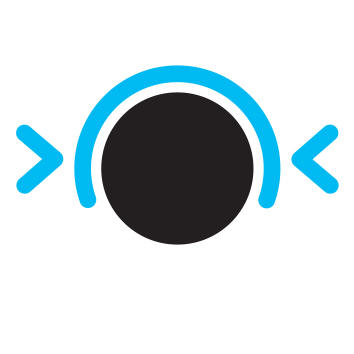A passionate team of snowboarders has developed this robust helmet for snowboarding and skiing, particularly freestyle.
This helmet is subject to European standard EN 1077:2007, applicable to helmets used in downhill skiing and snowboarding.
This standard tests the ability to absorb impacts and resist penetration. There are 2 categories of protection:
- Class A: protects the top and back of the head, as well as the ears and side of the head.
- Class B: protects the top and back of the head, but does not cover the ears.
A practical adjustment wheel to adapt the helmet to fit you.
The Turnring is an essential part of your helmet. This system can be easily and precisely adjusted at any time using the easily accessible dial that you can even use with your skiing gloves. It also gives you comfort and maximum safety. Turn the dial to the right to tighten and to the left to loosen.
A passive ventilation system.
The Venting System improves thermal regulation of your helmet and reduces fogging in your goggles. This type of design funnels the air to remove heat and humidity from the entire helmet/goggles area.
Hard Shell construction.
The Hard Shell Construction gives more durability and robustness to your helmet. This type of structure incorporates an outer shell, made of ABS, injection moulded to withstand powerful impacts. High resistance to bumps and knocks. The internal EPOS skullcap absorbs impact and collision at the time of impact. We recommend changing your snowboard helmet at least every 5 years if it hasn’t suffered a significant shock in the meantime.
How to choose the right size for your kid, and try on the helmet?
Measure your head circumference (from the middle of the forehead and above the ears) and choose the right size. When trying them on, there should be no discomfort. If it has no peak, try the helmet with the mask: there should be no gap between the two.
Adjust your helmet once you have the right size.
For their safety, the ski helmet must be properly adjusted:
- The head circumference should be adjusted using the thumb wheel.
- The chinstrap must be properly adjusted. They should be able to fit 2 fingers between the strap and their skin. If incorrectly fitted, the helmet will offer less protection.
When to change your ski helmet ?
We recommend changing your ski helmet every 5 years, unless it’s sustained a significant impact in the meantime. In case of high impact, you need to change your helmet: even if it isn’t visible, the inner material may be damaged and the helmet will offer reduced protection.
A helmet keeps you warm: you don't need to wear a hat underneath – in fact, it’s best not to.
Don't add a hat, which will separate head and helmet and reduce its protection. If necessary, choose a very thin balaclava designed for this purpose.
Avoid adding a camera, which will negatively impact safety; The standard does not take into account any elements added to the helmet.
This bowl-shaped helmet, robust thanks to its ABS shell offers good protection, while guaranteeing a timeless freestyle look.
Stability
Head size adjustment wheel. Bowl design for more stability.
Ventilation
12 holes to aerate and evacuate humidity.
Lightweight
ABS construction type 520g in size M.
Impact protection
Complies with EN1077:2007 standard (class B). ABS shell for greater durability.
A passionate team of snowboarders has developed this robust helmet for snowboarding and skiing, particularly freestyle.








